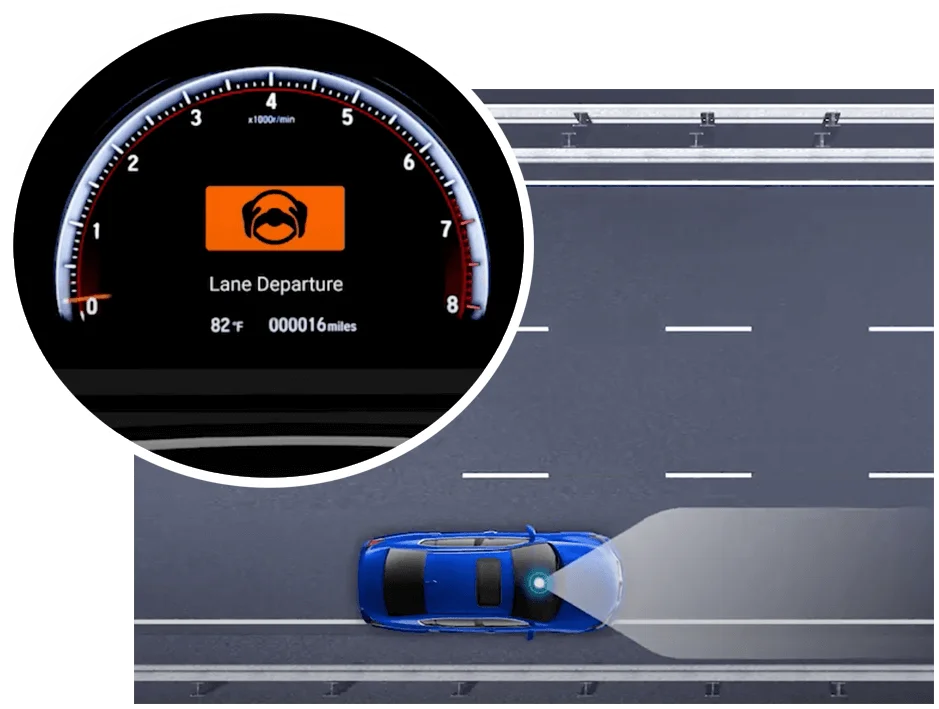How does a car’s road departure mitigation system work?


Car safety is a top priority for both manufacturers and consumers. With advancements in car technology, vehicle safety features have become more sophisticated and effective. One such feature is the road departure mitigation system, which helps prevent accidents caused by a car leaving its intended lane. In this article, we will explore how a car’s road departure mitigation system works and its importance in ensuring vehicle safety.
What is a road departure mitigation system?
A road departure mitigation system is a car safety system designed to prevent accidents caused by a vehicle unintentionally leaving its lane. It uses a combination of sensors, cameras, and computer algorithms to detect when a car is drifting out of its lane and takes corrective action to prevent a potential collision.
How does a road departure mitigation system work?
A road departure mitigation system typically consists of the following components:
1. Lane Departure Warning (LDW): This feature uses cameras or sensors to monitor the car’s position within the lane. If the system detects that the car is drifting out of its lane without the turn signal activated, it alerts the driver through visual, audible, or haptic warnings, such as vibrating the steering wheel or seat.
2. Lane Keeping Assist (LKA): In addition to providing warnings, some road departure mitigation systems also have a lane keeping assist feature. LKA uses the car’s electric power steering system to apply gentle steering inputs to keep the vehicle within its lane. This feature helps the driver maintain control and prevent unintentional lane departures.
3. Road Edge Detection: Some advanced road departure mitigation systems also include road edge detection. This feature uses cameras or sensors to detect the edge of the road, such as curbs or grass. If the system detects that the car is approaching the road edge, it provides warnings and may apply corrective steering inputs to keep the vehicle on the road.
Benefits of a road departure mitigation system
A road departure mitigation system offers several benefits in terms of car safety:
1. Accident Prevention: The primary goal of a road departure mitigation system is to prevent accidents caused by unintentional lane departures. By providing warnings and corrective actions, the system helps drivers stay within their lanes and avoid collisions with other vehicles or objects.
2. Increased Driver Awareness: The visual, audible, and haptic warnings provided by the system help drivers become more aware of their lane position. This increased awareness can reduce driver fatigue and distractions, leading to safer driving habits.
3. Improved Vehicle Control: The lane keeping assist feature of a road departure mitigation system helps drivers maintain control of their vehicles. By applying gentle steering inputs, the system assists the driver in staying within the lane, especially in situations where the driver may be momentarily distracted or fatigued.
4. Enhanced Safety in Challenging Conditions: Road departure mitigation systems are particularly useful in challenging driving conditions, such as heavy rain, fog, or snow. These conditions can impair visibility and increase the risk of unintentional lane departures. The system’s sensors and cameras can detect lane markings even in low visibility situations, providing timely warnings and assistance to the driver.
Limitations of a road departure mitigation system
While road departure mitigation systems are effective in preventing accidents, they do have some limitations:
1. System Reliance: Drivers should not solely rely on the road departure mitigation system and should always remain attentive and engaged while driving. The system is designed to assist the driver, but it is not a substitute for responsible driving habits.
2. Environmental Factors: The effectiveness of the system can be affected by environmental factors such as poor weather conditions, faded or obscured lane markings, or uneven road surfaces. In such situations, the system may not be able to accurately detect lane departures or provide timely warnings.
3. False Alarms: Road departure mitigation systems may occasionally provide false alarms, especially in situations where the lane markings are unclear or when the driver intentionally changes lanes without signaling. These false alarms can be distracting and may reduce driver confidence in the system.
In conclusion
A car’s road departure mitigation system is a crucial car safety feature that helps prevent accidents caused by unintentional lane departures. By using a combination of sensors, cameras, and computer algorithms, the system provides warnings and corrective actions to keep the vehicle within its lane. While road departure mitigation systems have limitations, they offer significant benefits in terms of accident prevention, increased driver awareness, improved vehicle control, and enhanced safety in challenging driving conditions. It is important for drivers to understand the capabilities and limitations of the system and to always remain attentive and engaged while driving.
Recent Posts
How do I create an engaging and informative online quiz or assessment?
Creating an engaging and informative online quiz or assessment can be a powerful tool for… Read More
What are the most effective methods for managing and reducing work-related stress in the hospitality industry?
Work-related stress is a common issue in the hospitality industry, where employees often face long… Read More
How can I improve my assertiveness and communication skills in a leadership position?
In a leadership position, assertiveness and effective communication skills are crucial for success. Being able… Read More
What are the key elements of a successful employee recognition and rewards program?
Employee recognition and rewards programs play a crucial role in motivating and engaging employees, as… Read More
How do I effectively manage and respond to customer feedback and reviews?
Customer feedback and online reviews play a crucial role in shaping a company's reputation and… Read More
What are the best strategies for effective time management as a stay-at-home parent?
Effective time management is crucial for stay-at-home parents who juggle multiple responsibilities on a daily… Read More